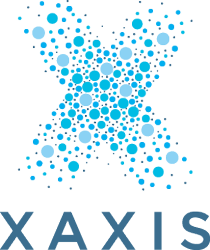Xaxis Continues Expansion With Bannerconnect Acquisition
by on 3rd Feb 2014 in News


WPP trading desk Xaxis has built on its ambitious European expansion strategy, announcing the acquisition of Bannerconnect for an undisclosed fee, just days after it formally unveiled its Brand Suite to the UK advertising market.
Xaxis announced the acquisition (the total purchase price has not been shared publicly) earlier today (3 February), claiming the pairing enables it to fully integrate Bannerconnect’s proprietary targeting technology into the Xaxis audience platform. Bannerconnect’s technology will also be used across trading desk initiatives within GroupM after the acquisition.
The integration of Bannerconnect into the Xaxis suite of targeting capabilities also means advertisers will be able to target their display ads to users across devices, according to Xaxis global CEO Brian Lesser.
Bannerconnect (a 40-plus man outfit based in the Netherlands) will continue under the leadership of its current CEO Sebastiaan Schepers, and also follows Xaxis announcing the full integration of 24/7 Media into its fold.
In a statement, Bannerconnect chief executive Schepers, said: “With programmatic ad spending projected to grow by double digit percentages for the next several years according to eMarketer, it is an exciting time to join with the market leader to continue to bring clients the most effective solutions in the space.”
ExchangeWire previously predicted that agencies would start buying more ad networks in 2014, and this deal would indicate a move in this direction. But why BannerConnect?
Firstly, BannerConnect is primarily a trading specialist that does most of its buying through AppNexus. It is understood that BannerConnect might act as 'back office' solution for some of the Xaxis trading in Europe.
BannerConnect also has technology built on top of AppNexus which Xaxis can now use to scale globally. Also the company's Bright product, a bespoke data analytics solution built with Netezza and integrated into AppNexus, pulls data from multiple platforms displaying actionable insights for clients. This will now be a Xaxis solution. It is interesting to see Xaxis and GroupM building their model around the platform.
AppNexus still remains the only semi-open API on the market (although MediaMath and MediaOcean are well on the way). The recent spate of M&A activity from WPP suggests solutions/ ad networks focused on building scalable solutions on multiple platforms would be a desirable acquisition to the Xaxis stack.
There also seems to be a preference for profitable, private European companies that remain cheaper options than heavily VC-backed US ad tech vendors.
The integration of 24/7 Media into Xaxis was also accompanied by the news that Caspar Schlickum – formerly the EMEA MD of Xaxis - had been granted the newly created role of CEO for the EMEA region. In addition, Damien Hodge has been appointed as director of client and agency development of its UK arm. He joined from fellow GroupM media agency MediaCom.
ExchangeWire understands this new role will see Hodge effectively oversee the promotion of Xaxis’ suite of tools across the GroupM media agency footprint, which also takes in MEC Interaction and Mindshare.
Last week Xaxis announced the UK launch of its Brand Suite of tools that let advertisers target users across a range of platforms with a range of ad formats, including rich media and in-stream video formats, across “brand safe inventory.”
The Xaxis Brand Suite runs through the Xaxis DMP and leverages the following components: Xaxis TV (a premium network of media partners), Xaxis Premium (which uses IAB Rising Star ad formats across a premium environment), on both desktop and mobile devices.
Speaking earlier with ExchangeWire, Xaxis’ top European exec Schlickum, said the acquisition of such technological capabilities would help publishers unlock further ad spend and bolster yield. Although he denied Xaxis was no longer entertaining the idea of working with third-party ad tech vendors.
He added: “Our positioning as an audience business remains absolutely unchanged. The only thing that has changed is that we have a much more powerful platform now to bring the publisher and advertiser sides of this together programmatically.
“We will focus our development effort on those parts of the stack that drive real strategic value for the brands we work with, and for our business. The DMP is a great example of this, as it means brands can be comfortable about how their data is used, and not used, given that they have a contractual relationship with us.”
Ad NetworkAd ServerAdvertiserBrandingCross-ChannelDataDigital MarketingDisplayDSPMartechMedia SpendProgrammaticTargetingTechnologyTrading DeskTVVideo








Follow ExchangeWire